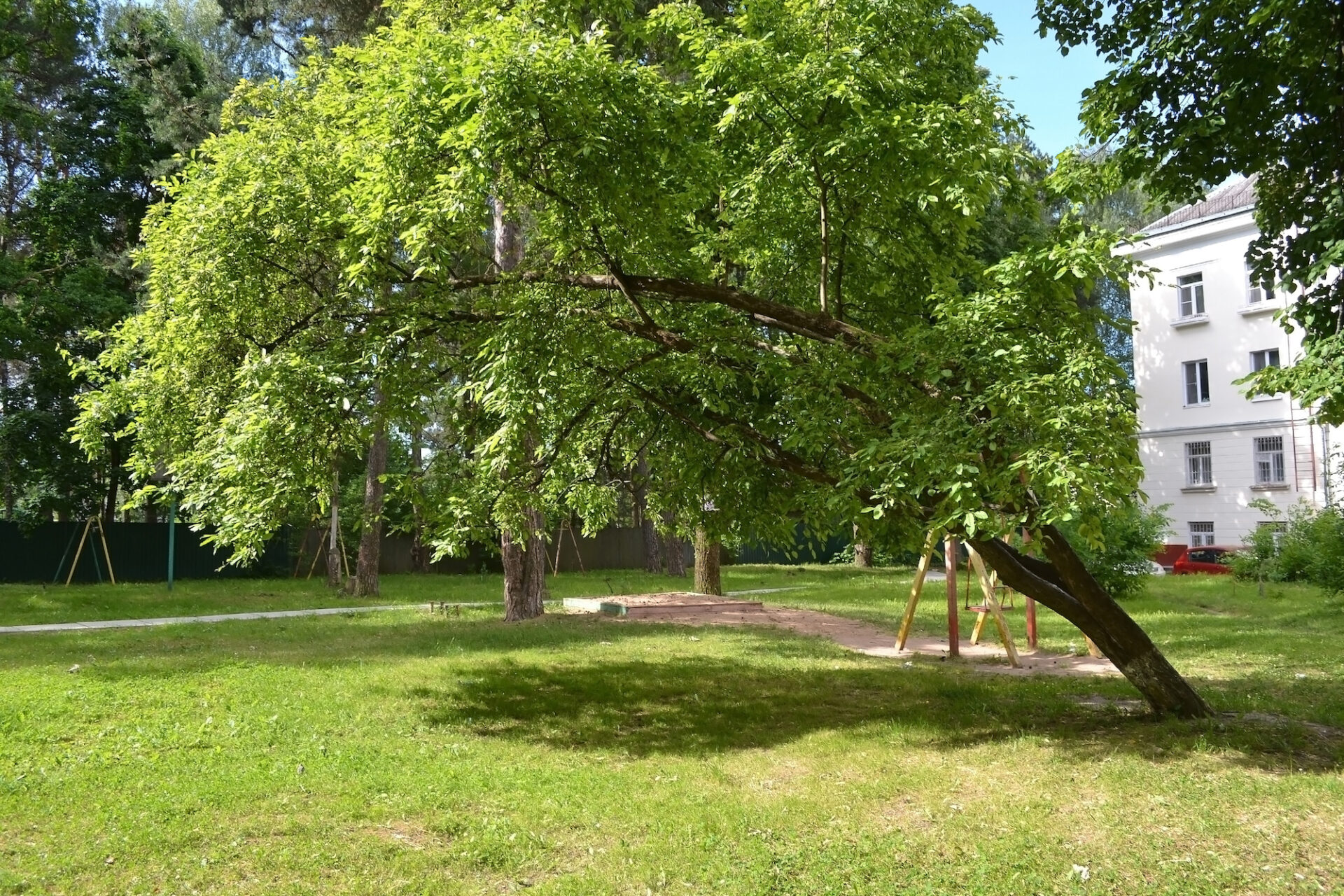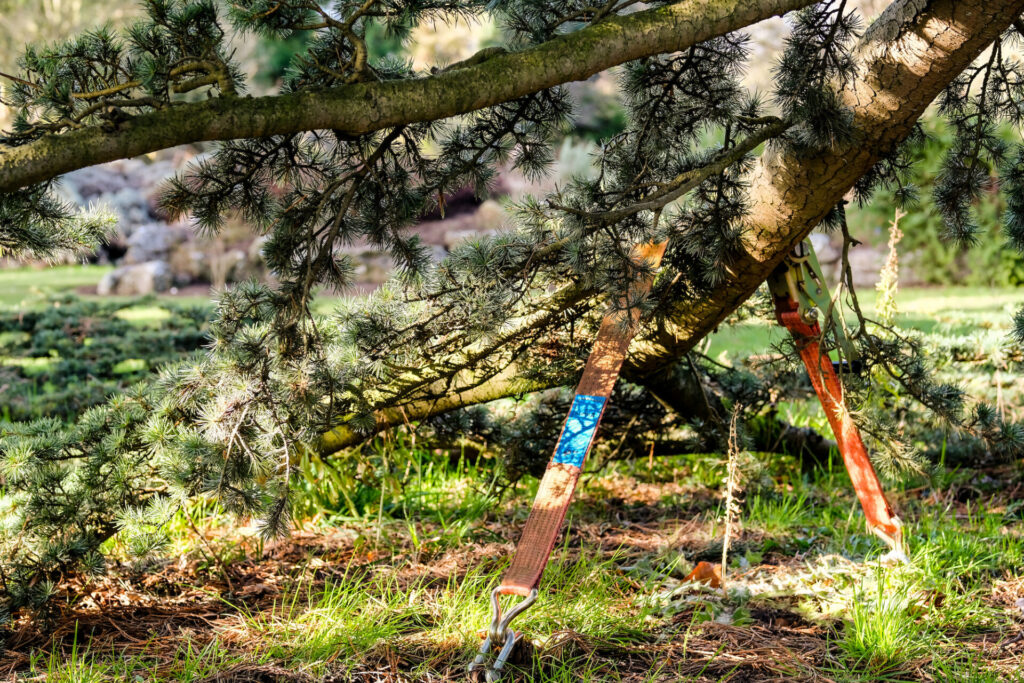Hey there, Bronx and Manhattan! Owens Brothers Tree Service team knows firsthand how those strong winds rolling through our urban landscape can sometimes play rough with our trees. A leaning tree isn’t always just an aesthetic problem – it can be a safety hazard too.
So, can you straighten it yourself, or is it time to call in the professionals? Let’s talk about how you’d go about straightening it yourself.

Factors Affecting Straightening vs. Removal
Before considering intervention, our team carefully evaluates several factors:
- Lean Severity: A minor tilt in a young tree differs significantly from a pronounced lean in a mature specimen.
- Root System Health: Exposed or damaged roots can indicate instability, making straightening attempts inadvisable.
- Overall Tree Condition: Disease, decay, or structural weakness compromise a tree’s integrity, potentially leading to removal as the safest option.
A Guide to Straightening a Safe Leaning Tree
Here’s a step-by-step guide for straightening a young, manageable tree with a minor to moderate lean:
Tools and Materials:
- Stakes: Choose wooden or metal posts at least 2-3 times the tree trunk’s diameter.
- Straps: Use wide, padded straps specifically designed for tree staking. Avoid rope or wire, which can damage the bark.
- Shovel
- Mallet or sledgehammer (for driving stakes)
- Cable and turnbuckles (optional, for added stability in loose soil)
Step-by-Step Guide:
- Prepare the Work Area: Clear any brush or debris around the tree’s base.
- Assess the Lean: Carefully determine the direction and severity of the lean. This will guide stake placement.
- Drive the Stakes: Angled 45 degrees from the lean, hammer the stakes into the ground at least 18 inches deep. Maintain a safe distance from the root ball, typically several feet from the base of the trunk.
- Righting the Tree: If the tree is small and manageable, carefully push it upright with even pressure along the trunk. It’s best to have a helper for this step, especially for larger trees.
- Secure and Support: Loop the padded straps loosely around the trunk and secure them to the stakes. Avoid over-tightening, as this can restrict growth.
- Monitor and Adjust: Regularly water the soil around the tree’s base, especially during dry periods. Check the straps and adjust as needed as the tree corrects its position. The tree may take months or even a year to fully straighten.
When to Consult a Professional Tree Service
While bracing a leaning tree can be a DIY project, there are situations where professional help is essential to ensure safety and the tree’s well-being. Here’s when you should consider calling certified arborists or tree removal experts:
Situation | When to Seek Professional Help |
Severe Tree Damage or Decay | If the tree is severely damaged or decaying, it may not be salvageable, and removal may be the safest option. |
Large or Complex Trees | For large or complex trees, especially those with multiple leaders, it’s best to involve professionals who have the expertise and equipment to handle the job safely. |
Uncertainty About Bracing | If you are uncertain about the bracing process or the tree’s stability, consult with an arborist for guidance and assessment. |
Legal Restrictions or Regulations | Some areas have regulations governing tree care and removal. Check local laws and consult with professionals to ensure compliance. |
High-Risk Locations | If the leaning tree poses a significant risk to people or property, prioritize safety and seek immediate professional assistance. |
Owens Brothers Tree Service: Your Trusted Partner
We prioritize the safety of people and property. Whether the best course of action is a simple straightening technique or a more involved solution, our experienced arborists will provide a clear assessment and implement the safest, most effective plan for your leaning tree.
